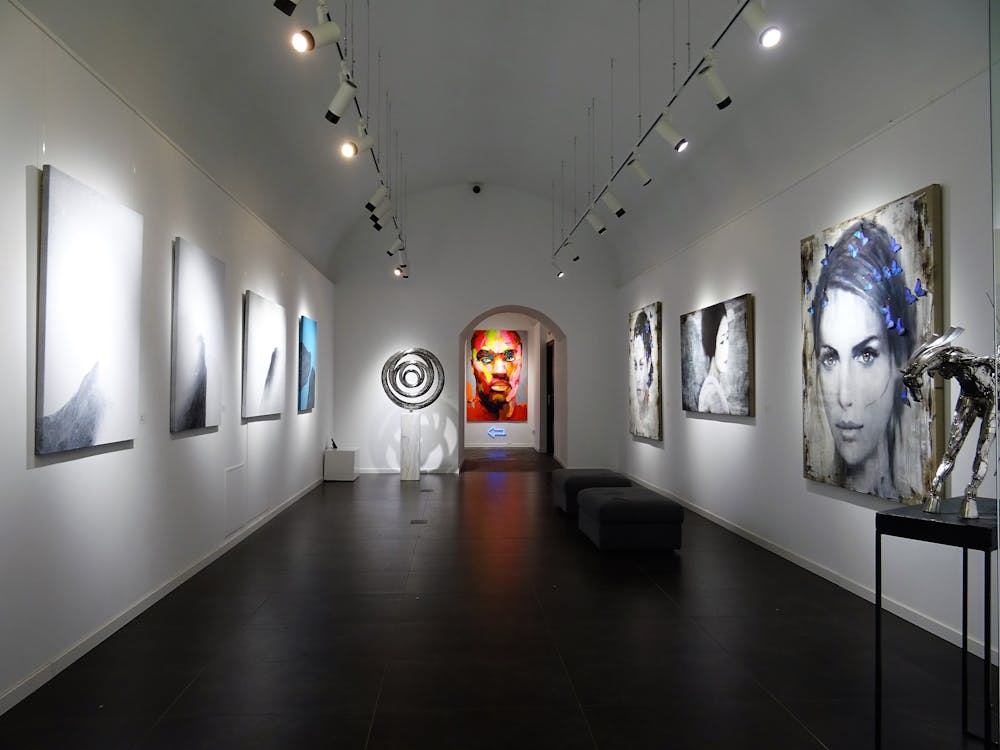Art has the power to inspire and provoke, to challenge and transform. Throughout history, there have been countless works of art that have had a profound impact on society and culture. From the Mona Lisa to the Starry Night, these are the top 10 influential works of art that have shaped modern culture.
The Mona Lisa (Leonardo da Vinci):

The Mona Lisa is perhaps the most famous painting in the world, and it has been a source of fascination for centuries. The painting, which depicts a woman with an enigmatic smile, was created by Leonardo da Vinci in the early 16th century. The Mona Lisa is known for its enigmatic smile and its subtle use of shading, which gives the impression of three-dimensional form. The painting has inspired countless imitations and parodies, and it is one of the most iconic symbols of the Renaissance.
The Starry Night (Vincent van Gogh):
The Starry Night is an iconic painting by Vincent van Gogh, created in 1889. The painting depicts a view of the village of Saint-Rémy-de-Provence at night, with swirling stars and a turbulent sky. The Starry Night is known for its bold use of color and its expressive brushstrokes, which give the painting a sense of movement and energy. The painting has inspired many imitations and has been featured in numerous works of popular culture, such as music albums and movies.
The Persistence of Memory (Salvador Dali):

The Persistence of Memory is a painting by Salvador Dali, created in 1931. The painting depicts melting clocks in a surreal landscape, and it is one of the most iconic works of the Surrealist movement. The Persistence of Memory is known for its strange and dreamlike imagery, which challenges the viewer’s perceptions of reality. The painting has inspired countless imitations and has become a symbol of the Surrealist movement.
The Scream (Edvard Munch):
The Scream is a painting by Edvard Munch, created in 1893. The painting depicts a figure with an agonized expression, standing on a rocky outcropping with a turbulent sea and sky behind him. The Scream is one of the most famous works of the Expressionist movement, and it is known for its powerful and emotive depiction of the human experience. The painting has inspired numerous imitations and has become a symbol of modern anxiety.
Guernica (Pablo Picasso):

Guernica is a painting by Pablo Picasso, created in 1937. The painting depicts the bombing of the Basque town of Guernica during the Spanish Civil War, and it is one of the most famous works of political art. Guernica is known for its powerful and emotive depiction of the horrors of war, and it has become a symbol of the suffering and resilience of the human spirit. The painting has inspired numerous imitations and has been exhibited in museums around the world.
The Birth of Venus (Sandro Botticelli):
The Birth of Venus is a painting by Sandro Botticelli, created in the 1480s. The painting depicts the goddess Venus emerging from the sea, and it is one of the most famous works of the Renaissance. The Birth of Venus is known for its beautiful and graceful depiction of the human form, and it has inspired numerous imitations and adaptations.
The Sistine Chapel Ceiling (Michelangelo):

The Sistine Chapel Ceiling is a series of frescoes by Michelangelo, created in the early 16th century. The frescoes depict scenes from the Bible, including the Creation of Adam, and they are some of the most famous works of the Renaissance. The Sistine Chapel Ceiling is known for its beautiful and detailed depictions of the human form, and it has inspired numerous imitations and adaptations. The frescoes were painted by Michelangelo over the course of four years, and they are considered one of his greatest works.
The Last Supper (Leonardo da Vinci):
The Last Supper is a painting by Leonardo da Vinci, created in the late 15th century. The painting depicts the moment when Jesus announces that one of his disciples will betray him, and it is one of the most famous works of the Renaissance. The Last Supper is known for its dramatic and expressive depiction of the characters, and it has inspired numerous imitations and adaptations. The painting was commissioned by Duke Ludovico Sforza of Milan, and it is housed in the monastery of Santa Maria delle Grazie in Milan.
The Great Wave (Katsushika Hokusai):

The Great Wave is a woodblock print by Katsushika Hokusai, created in the 1830s. The print depicts a giant wave off the coast of Japan, and it is one of the most famous works of the Ukiyo-e movement. The Great Wave is known for its bold and dramatic composition, and it has inspired numerous imitations and adaptations. The print has become a symbol of Japan and has been widely reproduced in various forms, such as posters and t-shirts.
The Persistence of Memory (Salvador Dali):
The Persistence of Memory is a painting by Salvador Dali, created in 1931. The painting depicts melting clocks in a surreal landscape, and it is one of the most iconic works of the Surrealist movement. The Persistence of Memory is known for its strange and dreamlike imagery, which challenges the viewer’s perceptions of reality. The painting has inspired countless imitations and has become a symbol of the Surrealist movement.

